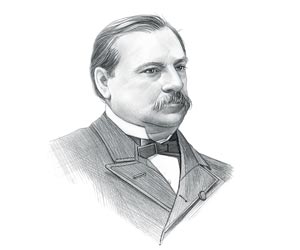|
|
|
|
|
Following the economic depression caused by the Panic of 1893 George Pullman increased working hours, cut wages and cut jobs. The workers belonged to the American Railroad Union (ARU) founded by Eugene V. Debs. The workers protested and started the Pullman Strike on May 11, 1894 and violence broke out. George Pullman and the railroads gained the support of President Cleveland for the use of US troops who used harsh methods to suppress the strikers. Debs was sent to jail and the strike was broken by July 17, 1894.
The 1894 Pullman Strike for kids
1894 Pullman Strike Significance
Pullman City, Chicago, Illinois
Pullman Strike for kids The labor force at the Pullman Palace Car Company was reduced from 5,500 to 3,300 The Pullman pay cuts averaged 25% per employee and wages were based on piece-work As the dispute spread, over 100,000 employees working on 24 railroads centering at Chicago were involved in the strike Deaths: During the violent dispute, 12 people were shot Number of Arrests: Over 500 strikers were arrested and over 400 found guilty Reasons for the arrests included conspiracy to commit offenses and restrict trade, murder, assault, arson, burglary, intimidation and inciting to riot The arrests included Officers of the American Railway Union and Eugene V. Debs, George W. Howard and Sylvester Keliher were found guilty of different offences. Union leader Eugene V. Debs was jailed for six months for contempt of court. The loss in wages of the Pullman strikers is estimated as at least $350,000 Workers representatives met with the company owner George Pullman but he refused to restore the wages or to reduce rents. The representatives were later dismissed from the company. In the early Spring of 1894 the company announced that the workers either accepted a wage cut or the factory would have to shut. By May the workers protested they were unable to survive on the wages and asked the company to restore the old rates of pay. The Pullman company refused and on May 11, 1894, the workers walked out in a 'wildcat' strike forcing the factory to close The American Railway Union, led by Eugene V. Debs, stepped in. Eugene Debs ordered a nationwide boycott of all Pullman cars that covered most railroads in the country encouraging protests from the porters, engineers, brakemen, and switchmen. The protests, rallies and demonstrations turned violent. There were riots, property was destroyed trains were derailed. Any workers attempting to work were threatened and intimidated. Governor Altgeld sent local militia to quell the riots - but many of the militia openly sympathized with the strikers. George Pullman and the owners of the railroads applied pressure on President Cleveland and his administration. The strikers had resisted deputy marshals and had hindered to US postal service which gave the President a reason to send in Federal troops. On July 2, 1894 a Federal writ was issued forbidding all interference with the US mail and with interstate railroad commerce. The Federal troops consisting of infantry, cavalry and artillery were sent in to enforce the writ and clashed violently with the strikers, there were deaths and serious injuries Violence and riots spread across the country and the President threatened the strikers with the full force of the US Army and Labor leaders and strikers were arrested. The government argued that by striking, the railroad workers were placing a restraint on trade and commerce, resulting in a direct violation of the Sherman Antitrust Act. The Pullman strikers were unable to resist the might of the United States government and on August 5, 1894 all labor action was stopped - the Pullman Strike was over. Four years later the 1898 Erdman Railway Labor Act set up arbitration procedures to settle railway disputes. |
| US American History |
| 1881-1913: Maturation Era |
|
|
|
|
|
First Published2016-04-19 | |||
|
Updated 2018-01-01 |
Publisher
Siteseen Limited
| ||
|
|

